Sandy Fussell's Blog, page 4
May 15, 2017
How to reduce the size of image rich files
 The problem: A friend emailed to say her Word document newsletter file was too big and even when she PDF’d it, the file size didn’t decrease. She was stumped. It had never happened before.
The problem: A friend emailed to say her Word document newsletter file was too big and even when she PDF’d it, the file size didn’t decrease. She was stumped. It had never happened before.
The solution: Unexpectedly large files with images are almost always due to the one or more embedded images being over-sized. Finding the problem image can be tricky, especially if images have been cut and pasted from different sources. Word doesn’t provide a way to analyse the size of embedded images.
The first step is to try is is Word’s image compression option. Sometimes this is enough to solve the problem.

1 Click on any image in the Word document
2 From the Format menu select Compress Pictures
3 In the dialogue box that pops up, uncheck Apply only to this picture and press OK. This will compress all the images in the file.
4 Check the file size.
If it’s still too large, here’s how to get a list of the file sizes for all the images.

1 Save the document as a html file (select Save As and select web page html as the file type)
2 The new html format file will display and Word will change your View to Web Layout. Use the View menu to change it back to Print Layout.
3. Close the html file. You don’t need it any more.
4. Use File Explorer to go the folder where you saved the html file. In addition to the html file you will see a new folder with _files at the end of the file name.

5. Open this folder and you will see a list of all the images files embedded in your Word document.
6. If you are not in Detail view in File Explorer, change to Detail view. You will see the file sizes.

7 Reduce the size of the offending file using a graphics program like Paint.net or Photoshop
How to reduce the size of image laden files
 The problem: A friend emailed to say her Word document newsletter file was too big and even when she PDF’d it, the file size didn’t decrease. She was stumped. It had never happened before.
The problem: A friend emailed to say her Word document newsletter file was too big and even when she PDF’d it, the file size didn’t decrease. She was stumped. It had never happened before.
The solution: Unexpectedly large files with images are almost always due to the one or more embedded images being overly large. Finding the problem image can be tricky, especially if images have been cut and pasted from different sources. Word doesn’t provide a way to analyse the size of embedded images.
The first step is to try is is Word’s image compression option. Sometimes this is enough to solve the problem.

1 From the Select the image
2 from the Format menu select Compress Pictures
3 In the dialogue box that pops up, uncheck Apply only this picture and press OK
Check the file size.
If it’s still too large, here’s how to get a list of the file sizes for all the images.
1 Save the document as a html file (Save as and select web page html as the file type)
2 The new file will display and Word will change your View to Web. Use the View menu to change it back to Print.
3. Close the html file. you don’t need it any more.
4. Use file Explorer to go the folder where you saved the html file. In addition to the html file you will see a new folder with _files at the end of the file name.

5. Open this folder and you will see a list of all the images files embedded in your Word document.
6. If you are not in Detail view in File Explorer, change to Detail view. You will see the file sizes.

7 Reduce the sxze of the offending file using a graphics program like Pain.net or Photoshop
May 8, 2017
To Like or to Retweet? Does it Matter?
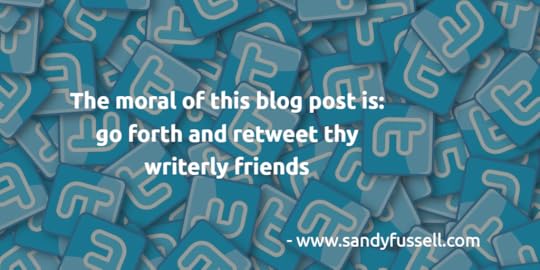

When you Like a tweet, a cute little heart turns red. It’s a warm and fuzzy thing. You’re sending a message that you enjoyed the tweet or found it useful. Somewhere, that makes someone happy as everyone, everywhere, not just on Twitter, wants to know someone liked something they said.
A Like is also a form of bookmarking. You can go back and review a list of your Likes, easy to display in a column in Tweetdeck.
Liking a Retweet can be tricky. If you like a tweet retweeted with a quote, you are liking the Retweet, not the original tweet.
 That’s the simple stuff about Twitter Likes. If you want the academic stuff, the Association for the Advancement of Artificial Intelligence has published a study Towards Understanding Twitter Favouriting Behaviour.
That’s the simple stuff about Twitter Likes. If you want the academic stuff, the Association for the Advancement of Artificial Intelligence has published a study Towards Understanding Twitter Favouriting Behaviour.
What about Retweets? Even simpler. If you retweet, you share the original tweet with your followers, who in turn might share it with their followers. It’s a bigger stamp of approval and importantly, helps promote the tweeter and the content.
 When you Like or Retweet, just maybe, someone will notice you. If they have notifications turned on, they’ll see what you did. In addition, on the Tweet against the count for number of Likes and Retweets, your profile will appear. Maybe they’ll click. Much more important than potentially finding a follower, it might be the beginning of a conversation or even a friendship. Did someone whisper networking? Yes, the best kind. Honest, authentic and open.
When you Like or Retweet, just maybe, someone will notice you. If they have notifications turned on, they’ll see what you did. In addition, on the Tweet against the count for number of Likes and Retweets, your profile will appear. Maybe they’ll click. Much more important than potentially finding a follower, it might be the beginning of a conversation or even a friendship. Did someone whisper networking? Yes, the best kind. Honest, authentic and open.
But back to the original question. To Like or to Retweet? It depends why you’re doing it. A Like gives a big thumbs up and brightens a spot in the world. That’s got to be a good thing.
 But it doesn’t share the word. So if a friend announces some important news (new book! new book!), Like it, certainly, and Retweet it, definitely. If you want to help out a friend or fellow writer, do both. Discerningly, of course.
But it doesn’t share the word. So if a friend announces some important news (new book! new book!), Like it, certainly, and Retweet it, definitely. If you want to help out a friend or fellow writer, do both. Discerningly, of course.
A Retweet is a chance to be actively helpful. Remember how your Likes are a form of bookmarking? Have a look through your Likes for this week. Is there something there that deserves to be shared? Power up your Like with a Retweet.
So the moral of this blog post is, go forth and Retweet thy writerly friends.
May 5, 2017
Mac & Me: A Faded Love Affair
 Today my two year flirtation with the dark side ended. I ditched my Mac for a Windows PC. And I’m much happier, back in my comfort zone.
Today my two year flirtation with the dark side ended. I ditched my Mac for a Windows PC. And I’m much happier, back in my comfort zone.
I’ve always been a Windows girl but I can pinpoint the moment when the Mac seduction began. It was Scrivener’s fault.
When I saw Scrivener, it was love at first sight. I was working on a YA ms which was structure-wise more complex than anything I’d attempted. I was tying myself in knots. Scrivener solved the problem.
It’s perfect for loose plotters like myself and although the YA is still only a first draft, I’ve written everything since in Scrivener.
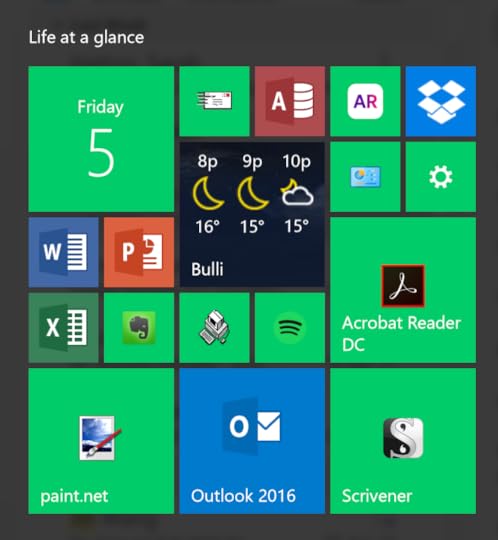 It didn’t take long for envy to set in as I kept tripping over features that were only available in the Mac version. The Windows version was way behind and some of the missing features were ones I considered basic necessities.
It didn’t take long for envy to set in as I kept tripping over features that were only available in the Mac version. The Windows version was way behind and some of the missing features were ones I considered basic necessities.
So to maximise Scrivener, I needed a Mac. Many of my author friends and colleagues encouraged me to switch. Twitter absolutely insisted when I asked the question. But I had one more problem to solve. I needed Windows for work and I didn’t want two separate laptops. I discovered Parallels – a way to run two operating systems on a Mac. I could have a Mac and virtual Windows too.
Two operating systems side-by-side appealed to the geek in me and so, in late 2014, I turned to the dark side. I bought a Mac Pro Retina. It wasn’t cheap but I was committed for the long haul. Parallels had some nice side benefits. I could have two Google accounts open at once – one in Windows and one is OS. Most importantly, I had a fully-featured version of Scrivener.
I never used the Mac office products. I was happy with what I already knew and a Pages document couldn’t be as easily shared or worked on cooperatively, as a Word document. The shortcuts drove me crazy and so many things seemed back to front. I persevered, but found I spent more and more of my time on the Windows virtual machine.
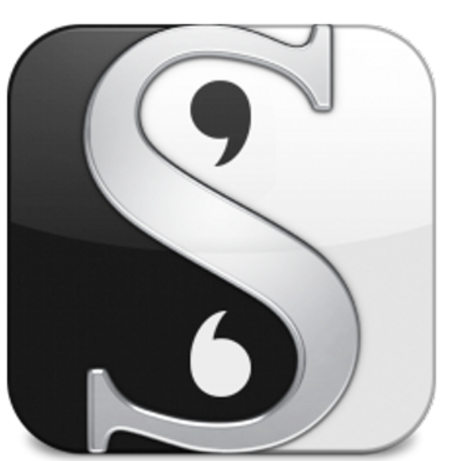 A year later, on holidays, working in a different place with the sun streaming through the window, I noticed some odd marks on my screen, as if the retina coating was deteriorating. A quick search revealed this was a known problem although Apple had not acknowledged it until thousands of dissatisfied customers created the Staingate website.
A year later, on holidays, working in a different place with the sun streaming through the window, I noticed some odd marks on my screen, as if the retina coating was deteriorating. A quick search revealed this was a known problem although Apple had not acknowledged it until thousands of dissatisfied customers created the Staingate website.
While they ultimately agreed to replace affected screens, there was no announcement, despite the problem applying to a known period and a deadline set for claiming a new screen under extended warranty. Customers like me who had noticed a small problem were were unsuspectingly ignorant of how bad it would get and that time was running out as the deadline drew near. The information was never made available on their website. I found out by chance, just in time. That didn’t sit well with me.
I’ve heard some people had issues getting there screens replaced free of charge but I had no problems and the staff at my local Apple Genius Bar were helpful and efficient. By then it was too late. The shine in the relationship had worn off with the retina coating.
When I loaded my old Windows copy of Scrivener onto my interim desktop setup,while my Mac was being fixed, it advised an update needed to be installed. Scrivener for Windows had jumped forward in leaps and bounds. At that precise moment, the Mac affair soured beyond repair.
My new laptop arrived a few days ago. I love my lime green windows and I don’t miss my Mac at all.
What about you? Mac or Windows?
April 2, 2017
Flying through Clouds Blog Tour
 I don’t think there’s anything quite like the camaraderie of the children’s book industry. Sure, we all have our genres and preferences, but at the end of the day, from picture book to YA (unintentional rhyme!), we stand together.
I don’t think there’s anything quite like the camaraderie of the children’s book industry. Sure, we all have our genres and preferences, but at the end of the day, from picture book to YA (unintentional rhyme!), we stand together.
I’ve made many friends through writing, scattered across the nation and all over the world. Only a few are not far away. Like Michelle.
I met Michelle years ago at the Illawarra South Coast CBCA Children’s Literary Lunch, an annual event where authors and illustrators volunteer to spend their time with school groups. Which gives you a clue to the type of person Michelle is. Always happy to pitch in and help a good children’s literature cause.
Historical fiction is a reading favourite for me and Michelle’s first book, Racing the Moon, set in the 1930s 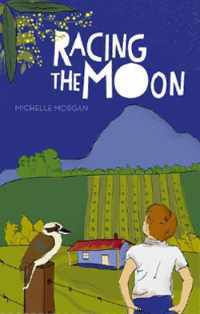 depression, already has a hard-to-get because-there’s-never-enough-space spot in my bookshelves. I’m pleased to be the first stop on the blog tour for her new YA release, Flying through Clouds, set in the same historical period. It’s a heart-warming coming of age story about Joe, who lives in working class Glebe and wants to fly.
depression, already has a hard-to-get because-there’s-never-enough-space spot in my bookshelves. I’m pleased to be the first stop on the blog tour for her new YA release, Flying through Clouds, set in the same historical period. It’s a heart-warming coming of age story about Joe, who lives in working class Glebe and wants to fly.
I’ll admit I’m always a little biased towards a book with a local history scenario, and I wanted to cheer when Smithy landed the Southern Cross on Seven Mile Beach. But any biases aside, this is an entertaining story served up on a thoroughly researched, authentic slice of Australian history.
Over to Michelle, in the captain’s seat…
My new historical YA novel, Flying through Clouds, was published on 2 April 2017.
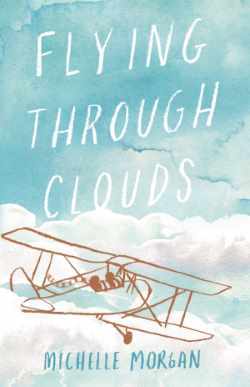 Flying through Clouds has a compelling blend of humour, drama and adventure. It immerses the reader in the world of Joe Riley, a teenage boy growing up in Sydney in the 1930s, who dreams of becoming an aviator. Joe has many obstacles to overcome and a flawed plan. His adventures and well-meaning but bad choices will resonate with teenagers today.
Flying through Clouds has a compelling blend of humour, drama and adventure. It immerses the reader in the world of Joe Riley, a teenage boy growing up in Sydney in the 1930s, who dreams of becoming an aviator. Joe has many obstacles to overcome and a flawed plan. His adventures and well-meaning but bad choices will resonate with teenagers today.
I spent months researching before I started writing Flying through Clouds. I wanted to understand how people lived in the 1930s – the food, clothing, housing, schools, work opportunities, social conditions, transport, how they communicated with each other, and what they did on the weekends. I needed to become familiar with that world before developing my characters and narrative. The most difficult research was learning how to fly a 1930 de Havilland Gypsy Moth. I needed to understand the steps involved and the terminology that was used. I read books about famous aviators and their flying adventures, and watched technical videos on how to fly a Gypsy Moth. I interrogated everyone I knew who had ever flown vintage planes.
5 things I learnt when I was doing my research:
1. Just over 1.2 million people lived in Sydney in 1932, almost half the population of Australia. It was the height of the Depression and nearly 32% of Australians were unemployed.
2. People started climbing the Sydney Harbour Bridge even before it was opened in March 1932, and they’re still climbing it. But now you have to pay for the privilege and wear safety gear
3. In 1932, it cost around one shilling (10 cents) to go to the movies. Some cinemas included a cobber (a chocolate covered toffee) in the admission price.
4. Wireless (Radio) was the new technology of the 1920s and 1930s, but not all families could afford to own one. Those who did, would sit around the radio / wireless listening to the news, sport, their favourite serials, comedy shows and music.
5. Sir Charles Kingsford Smith landed his famous plane, Southern Cross, on Seven Mile Beach at Gerroa in January 1933, and took off again early the next morning on the first commercial flight to New Zealand.
I’ve woven this historical detail and more into the narrative of the novel.
I hope you enjoy Flying through Clouds!
AUTHOR: Michelle Morgan
TITLE: Flying through Clouds
ISBN: 978-0-9953865-0-1
AGES: 12+
RRP: $18.99 Pbk
Flying through Clouds is available now at bookshops, educational and library suppliers, and can be ordered on Michelle’s website.
Find out more about Michelle and her books on her website.
Check out Di Bates’ blog tomorrow for Day 2 of the Flying through Clouds Blog tour.
March 20, 2017
#desktopstories – what creatives keep on their desk
Today when I was supposed to be writing, I just couldn’t get going. I’m not worried. I wrote up a storm
yesterday. Slashed all previous word count records so I’m not surprised I feel a little empty. (Although, honesty compels me to admit I am a slow writer – the records weren’t that high).
I decided to clean up my desk instead. It’s always a mess except on the rare days I clean it (lasts about 1 hour) or the time I was asked to submit a picture of my desk for a blog – see below – (lasted even less than an hour).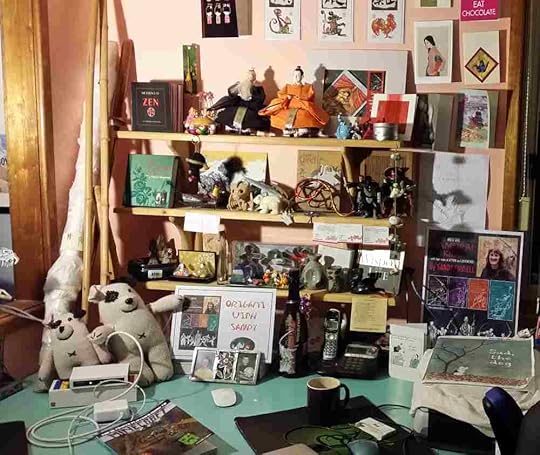 The second time I was asked for a picture, I decided to ‘tell it like it is’ and took a photo of the mess.
The second time I was asked for a picture, I decided to ‘tell it like it is’ and took a photo of the mess.

While I was stacking, racking and packing (what, I’m supposed to throw stuff out?) and thinking about those pics, I remembered a blog post I read ages ago about the things creatives keep on their desks. It occurred to me all my so-called clutter was actually a pile of stories, some of which continue to serve a valuable purpose in my life, creative and otherwise. So I quickly change POV, I’m used to doing that, and decided to celebrate the stuff I keep on my desk.
I even invited other people to do it with me on Facebook and Instagram #desktopstories I hope some others do share some of their desktop stuff and the story behind it.

Here is the first ofmy #desktopstories
I’ve had this on my desk since 1995, long before I ever thought about writing a story. I bought it on a  miserable, rainy, things-not-going-right kind of day while wandering the Queen Victoria Building in Sydney. It reminds not to cry over spilled milk, that nothing is as bad as it seems and things will always get better. For a writer, it’s particularly useful for those times I’m dealing with characters that don’t work, plots that don’t make sense and stories no-one wants (the ones with the character and plot problems).
miserable, rainy, things-not-going-right kind of day while wandering the Queen Victoria Building in Sydney. It reminds not to cry over spilled milk, that nothing is as bad as it seems and things will always get better. For a writer, it’s particularly useful for those times I’m dealing with characters that don’t work, plots that don’t make sense and stories no-one wants (the ones with the character and plot problems).
So I guess I did some writing today after all.
February 19, 2017
The Week That Was #7
Mostly I worked. I took on a new part-time job. Now I have four of those plus writing. the problem with part-time jobs is they are like kindergarten colouring. They never stay inside the lines. They bleed into each other, each sucking up a little extra time until a whole day is gone. I think I’m good at time management so I’m sure I can whip this situation into shape so it doesn’t eat up my writing time like it did this week.

 I reviewed – Outback Lullaby by Sally Odgers and Lisa Stewart (the illustrations are gorgeous, yes, i said gorgeous, because they are) and Snow White and the Seven Ninjas by Matt Cosgrove for the Funday section in the Sunday Telegraph. Snow White and the Seven Ninjas is the perfect book for older reluctant readers. Lots of illustrations and easy to read but plenty of reading street cred. it looks the part.
I reviewed – Outback Lullaby by Sally Odgers and Lisa Stewart (the illustrations are gorgeous, yes, i said gorgeous, because they are) and Snow White and the Seven Ninjas by Matt Cosgrove for the Funday section in the Sunday Telegraph. Snow White and the Seven Ninjas is the perfect book for older reluctant readers. Lots of illustrations and easy to read but plenty of reading street cred. it looks the part.
I read – Not much. An article about Neil Gaiman in the Sunday paper. He seemed to have everything and I couldn’t help wonder what that felt like.
I researched – more travel writing. I purchased and read Hazel Edwards‘ Non-boring Travel Writing which came with free advice on running workshop tasks. Hazel is as always, knowledgeable and generous.
I downloaded – a program so I could read e-books (like Hazel’s). It’s called Calibre and is an excellent choice of free software to manage an e-book personal library, not just read e-books. But I don’t think I’ll ever have an e-book library, just the occasional necessary title.
I went – to see James Taylor at the ICC in Sydney. the man is a legend, during intermission h e sat on the edge of the stage and signed autographs until it was time for him to pick up his guitar again.
e sat on the edge of the stage and signed autographs until it was time for him to pick up his guitar again.
I caught – lots of new Pokemon given 80+ new ones were released. but the biggest catch was one from the first set. A rare Jynx nabbed outside the Chinese Gardens in darling Harbour.
I wrote – 500 words. That’s all. But they were important ones. A rough draft of the last chapter of Algernon and the Outside Girl. I’m nowhere near finished but when I have the end, I know I can get there. Now I just have to work on getting there faster.
I wasted time playing YAWG– despite last week’s good intentions. But it’s fun. And its words. So that’s okay, right?.
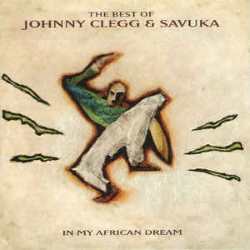 I’ve been listening to – Johnny Clegg and Savuka, In My African Dream. Still. Because I like it a lot. I’ve also worked out how to cast from Spotify on my phone so the whole house explodes in sound.
I’ve been listening to – Johnny Clegg and Savuka, In My African Dream. Still. Because I like it a lot. I’ve also worked out how to cast from Spotify on my phone so the whole house explodes in sound.
I failed – the shopping list test. It’s all fine and good to have your shopping list in the cloud, on-line in real-time to manage expenditure while making trolley decisions – and all linked up to Trello boards tracking food stocks. However, none of this is any use if your phone battery is flat. That’s how you end up with no Nutella. System fail.
February 13, 2017
The Week That Was #6
Six weeks in and going strong. The idea is if I keep this thread going then other posts will wrap around it. So far, and it’s early days, I’ve duped myself and the strategy is working. I’m very partial to thread imagery tonight as I’ve been researching the Ancient Greek Fates.
I reviewed – you and me by Debra Kelly and Karen Blair and The Grand Genius Summer of Henry Hoobler by Lisa Shanahan for the Funday section in the Sunday Telegraph. The latter is my favourite book of the year so far. It’s such a real and familar depiction of a family and friends camping holiday. 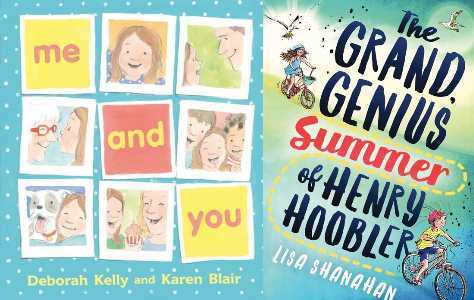
I read – Creative Journal Writing by Stephanie Dowrick. A friend gave it to me for Christmas a year ago, but journal writing never made it off my To Do List despite my enthusiasm. It’s about to big time as I’m facilitating a Seniors Week Workshop on Travel Journalling,something I first tried way back in 1991 when I went to the US and Canada for three months.
I caught – two new Pokemon. I now have pesky Ditto (which was hiding out as an even peskier Rattata) and a Lickitung. Lickitungs are currently everywhere, part of the Valentine’s Day pink-up of Pokemon Go.
[image error]I wrote – a lot. A chauffer gig for #2 son saw me waiting around the mall for 4 hours so I parked myself in a coffee shop and wrote. Until then, I never realised how much of a distraction email is. Algernon and the Outside Girl now has 9,548 words. Unfortunately, there’s one big problem with coffee shop writing – cake (in this particular case, a delicious lemon and lime citrus tart).
I wasted YAWG– a lot of time playing on my iPad. Yes, I embarrassed to admit it but now my name is nicely entrenched on the leader board, I can move on.
I’ve been listening to – Johnny Clegg and Savuka. Spirit of the Great Heart is an all-time favourite and the lyrics are currently very timely. A song that begins with “the world is full of strange behaviour” is spot on.
I’m looking forward to – the return of Goggle Box. I’m not a TV watcher by choice. I sit on the lounge with my laptop and glance now and then at what everyone else is watching. But for Googlebox, I close the laptop lid and get ready to laugh.
The Week that Was #5
Warning! Warning! This might be the most boring Week That Was post of the whole year!

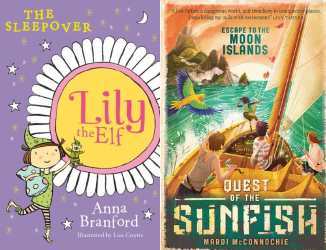 I reviewed – lots of series books for the Funday section in the Sunday Telegraph – the Lily the Elf series by Anna Branford,
I reviewed – lots of series books for the Funday section in the Sunday Telegraph – the Lily the Elf series by Anna Branford,
illustrated by Lisa Coutts, The Quest of the Sunfish: Escape to Moon Islands by Mardi McConnachie (the first book in an exciting new middle grade fantasy series), Sage Cookson’s Sweet Escape by Sally Murphy (I can’t help but recommend a book where chocolate has a leading role) and last but certainly not least Trouble and the New Kid by Cate Whittle & Stephen Michael King.
Trouble is a dragon and his name says it all. I loved the premise of this 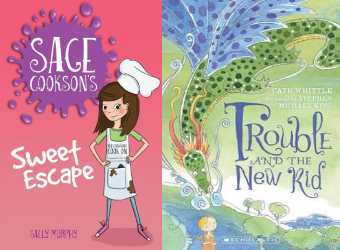 story. A dragon stole the house and even though it was defeated in a staring competition,it couldn’t give it back because it was stuck tight on a mountain. So everyone just lived together and trouble flew the kids to school and mum and dad to work. The ultimate ‘just getting on with it’approach to life. I like that.
story. A dragon stole the house and even though it was defeated in a staring competition,it couldn’t give it back because it was stuck tight on a mountain. So everyone just lived together and trouble flew the kids to school and mum and dad to work. The ultimate ‘just getting on with it’approach to life. I like that.
I followed – Cates blog. I like that too – the posts and the web design.
I wrote – another chapter in Algernon and the Outside Girl.
I counted – most days I did accounting. Four sets of BAS, worked on the end of year accounts for the South Coast Writers Centre and tallied numbers until it drove me nuts. That was where most of the week went.
January 31, 2017
The Week That Was #4
Sometimes I feel like these The Week That Was posts are full of excuses. It may be that a pattern is emerging. But this time I have a really good excuse as the week was brought to a close in a most drama-filled fashion. If I am ever reincarnated – as anything at all – I will not be having children. So for this week:

I read – (1) Mr Romanov’s Garden in the Sky by Robert Newton. It’s a middle-grade book #LoveOZKidLit and Robert Newton hasn’t written a book I haven’t loved yet. When this arrived for review, I read the blurb and stayed where I was until it was read. I wasn’t disappointed.
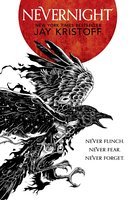 I read (2) Nevernight – Jay Kristoff. This one has been sitting on my desk since my birthday in September waiting for the right moment to read it from start to finish. I thought that would be my annual January holiday but not so – as I ended up unholidaying (see my earlier comment about not having children). Last weekend, when I desperately needed a distraction, the wonderful worldbuilding, characterisation, background history footnotes and storytelling of Nevernight kept me sane.
I read (2) Nevernight – Jay Kristoff. This one has been sitting on my desk since my birthday in September waiting for the right moment to read it from start to finish. I thought that would be my annual January holiday but not so – as I ended up unholidaying (see my earlier comment about not having children). Last weekend, when I desperately needed a distraction, the wonderful worldbuilding, characterisation, background history footnotes and storytelling of Nevernight kept me sane.
I smiled at – this quote posted on Twitter by @aussiepicturebooks from @lyndajdickson at BooksDirect
“Reading gives us some place to go when we have to stay where we are.” – Mason Cooley
That was me on the weekend, reading Nevernight. How does Twitter know this stuff?
I began – zero inboxing with a little help from Trello. If it’s not done and filed on the spot, it’s prioritised and Trelloed (my new favourite verb). And if it never makes it to the top of a Trello list – it just wasn’t important. So far it’s working but it’s early days.
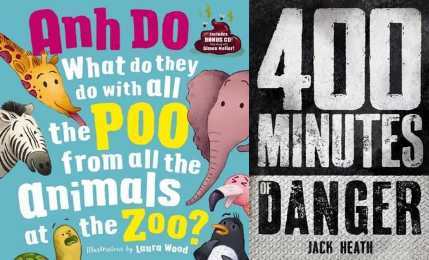 I reviewed – for the Funday section in the Sunday Telegraph – (1) What Do They Do With All the Poo from All the Animals in the Zoo – a fun rhyming picture book from Anh Do and Laura Wood and (2) 400 Minutes of Danger by Jack Heath. This had been sitting on my desk for longer than usual and now I’m wondering why. Maybe because the cover didn’t grab me. But the writing did. Middle-grade at it’s most action-packed and frenetic (while being clever at the same time) in ten short stories. Wonderful. Easiest review I’ve ever written. I’ll can see I’ll probably be reading, reviewing and recommending more Jack Heath titles.
I reviewed – for the Funday section in the Sunday Telegraph – (1) What Do They Do With All the Poo from All the Animals in the Zoo – a fun rhyming picture book from Anh Do and Laura Wood and (2) 400 Minutes of Danger by Jack Heath. This had been sitting on my desk for longer than usual and now I’m wondering why. Maybe because the cover didn’t grab me. But the writing did. Middle-grade at it’s most action-packed and frenetic (while being clever at the same time) in ten short stories. Wonderful. Easiest review I’ve ever written. I’ll can see I’ll probably be reading, reviewing and recommending more Jack Heath titles.
I blogged – about paper made from poo (No, this is not a pattern despite the review above) – The books of the future could be made from elephant dung
I wrote – a chapter of Algernon and the Outside Girl. I am still exploring the plot options – so lots of potentially unnecessary writing – but that’s the way I write and roll – and it seems to have worked so far.
I taught myself – about swordtails, x-wings and colour chains. That’s sudoku talk. I’m trying to exercise my brain.
I worried – about the world. I was not alone.



